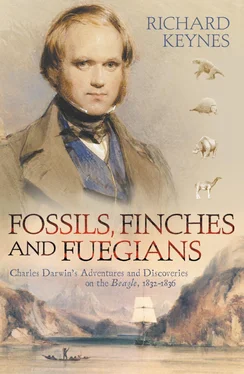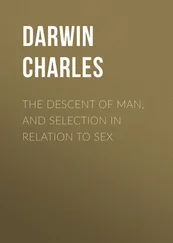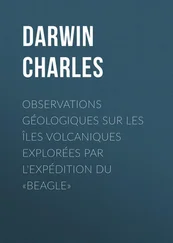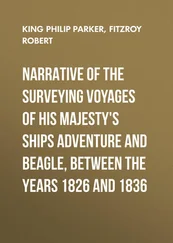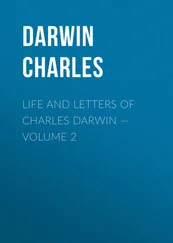Beagle by Conrad Martens, of whom I knew vaguely as the second of the ship’s official artists. I opened one of the portfolios to find the picture labelled by Martens as ‘Slinging the monkey. Port Desire – Decr 25, 1833’, which portrayed the ship’s crew engaged on the Royal Navy’s traditional celebration of Christmas Day, with the
Beagle and
Adventure anchored in the background. The picture bore the initials ‘RF’ at the top right-hand corner, though the
Beagle ’s Captain, Robert FitzRoy, evidently did not approve of every detail, because Martens had written below: ‘Note. Mainmast of the Beagle a little farther aft – Miz. Mast to rake more’. This graphic document, and others in the portfolios, opened an exciting new window for me on to the voyage of the
Beagle , and launched me on an entirely new and rewarding field of part-time study.
On my return home, I consulted Nora Barlow, my godmother and mentor, and like my mother a granddaughter of Charles Darwin. Through her pioneer editions of Charles Darwin’s Diary of the Voyage of H.M.S. “Beagle” (1933), Charles Darwin and the Voyage of the Beagle (1945), Darwin’s Autobiography (1958), his Ornithological Notes (1963), and Darwin and Henslow: The Growth of an Idea. Letters 1831–1860 (1967), Nora Barlow was the true founder of what is often known nowadays as the Darwin Industry. Her wisdom and kindness had no bounds, and my debt to her is immense.
With Lady Barlow’s encouragement, I set about assembling a catalogue of all the extant drawings and paintings made by Conrad Martens during his initial journey from England to Montevideo, where on 3 August 1833 he joined the Beagle as a replacement for the ship’s first official artist, Augustus Earle, who had been taken ill. Then I listed the drawings and paintings that he made in Patagonia, Tierra del Fuego, the Falkland Islands, the Straits of Magellan, Chiloe and around Valparaiso, until in December 1834, there being no longer any space for him on the Beagle , he set sail for Australia. Here he established himself in Sydney as the leading artist of the period, and at the same time continued to paint developments of his Beagle drawings in watercolour, some of which he sold to Darwin, and others to Robert FitzRoy to be engraved as illustrations for the published accounts of the voyage. Selections from this material were reproduced in the first book that I edited, The Beagle Record (1979), to illustrate some of the places and people actually seen by Darwin and FitzRoy in South America. For the most immediate written records, I drew upon the vivid accounts in letters from Darwin to his sisters and to his mentor in Cambridge, Professor John Stevens Henslow, and also in what he himself called his ‘commonplace journal’, but which will be referred to here as the ‘Beagle Diary’ to distinguish it from his subsequently published Journal of Researches . In addition I made use of FitzRoy’s published account, 6 his few surviving diaries, and some of his letters.
Fifty years after its publication, Nora Barlow’s edition of The Beagle Diary had long since gone out of print. Darwin’s splendid description of his daily life on the Beagle and ashore, sent home at intervals to his family in Shrewsbury, is one of the major classics of scientific exploration. My next task was therefore to produce a new version revised according to modern standards of transcription, with Nora Barlow’s very rare errors put right, and a new introduction and footnotes. This was published in 1988, and has recently been reprinted in paperback. 7
Two substantial Darwin manuscripts still remained unpublished at the Cambridge University Library, namely the Zoology Notes 8 and the Geology Notes 9 , 10 made on the Beagle . Apart from a brief account of some observations made in Edinburgh in 1827, 11 these were his first scientific writings, containing a detailed record of all that he observed and collected during the four-and-three-quarter years of the voyage. Their importance is that here, and in his letters to Henslow, 12 it is possible to trace the first beginnings of Darwin’s thinking about the evolution not only of the animal kingdom but also of the face of the earth.
After retiring in 1986 from administration and teaching in Cambridge, I had more time at my disposal, so in addition to visiting the marine laboratory at Roscoff in Brittany every autumn for continuation of some experimental work, I embarked on a transcription 13 of Darwin’s Zoology Notes and Specimen Lists. They comprise some hundreds of quarto pages of notes, with descriptions of 1500 specimens preserved in Spirits of Wine, and some 3500 not in Spirits. In order to identify the insects and marine invertebrates collected by Darwin, I needed a great deal of help from experts on their taxonomy, but the vertebrates had mostly been covered in the five parts of The Zoology of the Voyage of H.M.S. Beagle published in 1839–1843. 14 Completion of the task has kept me busy for about ten years, but it has now at last been finished. The Geology Notes have not as yet been transcribed and published, occupying as they do around four times as many pages as the Zoology Notes. However, articles by Secord, 15 Herbert 16 and Rhodes 17 have discussed them helpfully, as has Janet Browne’s account of the voyage. 18 Moreover, photocopies of the MSS are available at the Cambridge University Library for study by anyone well practised at reading Darwin’s reasonably legible handwriting.
If any of my readers feel that they would like to become better acquainted with one of their forebears, I can recommend the course that I adopted thanks to that chance introduction in Buenos Aires in 1968. When you have transcribed several hundred thousand words of his writings, concerned with places a few of which you have seen for yourself not too greatly changed 160 years later, you may once in a while almost feel that you are talking to him. But it helps to be lucky enough to have a forebear who was as friendly to all men, and as constructively critical and honest about his own ideas, as Charles Darwin always was.
Richard Darwin KeynesCambridge, July 2001
CHAPTER 1
The Man who Walks with Henslow
Charles Robert Darwin was born at The Mount, Shrewsbury, on 12 February 1809, the second son and fifth child of Dr Robert Waring Darwin.
His genetic make-up in the male line was strongly scientific, although his father combined a position as one of the leading physicians in the Midlands not with science, but with acting widely as a private financial adviser to the gentry of the region. Charles would later have high praise for his father’s powers of observation, and for his sympathy with his patients, but considered that his mind was not truly scientific. Robert’s wealth was nevertheless as valuable an inheritance for his son as a gene for science, not only paying for Charles’s board and lodging on the Beagle when he sailed as an unofficial scientist and companion to the Captain, but also enabling him to pursue a scientific career single-mindedly for the rest of his life, without ever having to earn his living.
However, his grandfathers, Dr Erasmus Darwin of Lichfield and Josiah Wedgwood I the potter, who built a model factory at Etruria near Stoke-on-Trent, were two of the leading scientists and technologists of their time. Both Fellows of the Royal Society, they were also founding members of the Lunar Society of Birmingham, which played the principal intellectual part in the establishment of the Industrial Revolution in England. Erasmus Darwin 19 was primarily a practising physician, but his prodigious energies overflowed in many other directions, as a poet, an inventor of mechanical devices of various kinds, a pioneer in meteorology and in the description of photosynthesis, and not least as author of an immense medical treatise entitled Zoonomia,* and of a fine poem, The Temple of Nature , in which as we shall see he made an important contribution to his grandson’s Theory of Evolution. Josiah Wedgwood I made radical improvements in the handling of china clay, founded a famous pottery, and developed a canal system for the transport of his products. The chemists of Europe came to him for their glassware and retorts, and in due course his son Josiah Wedgwood II provided his nephews Erasmus and Charles with fireproof china dishes manufactured at the pottery, and an industrial thermometer for their private laboratory.
Читать дальше
